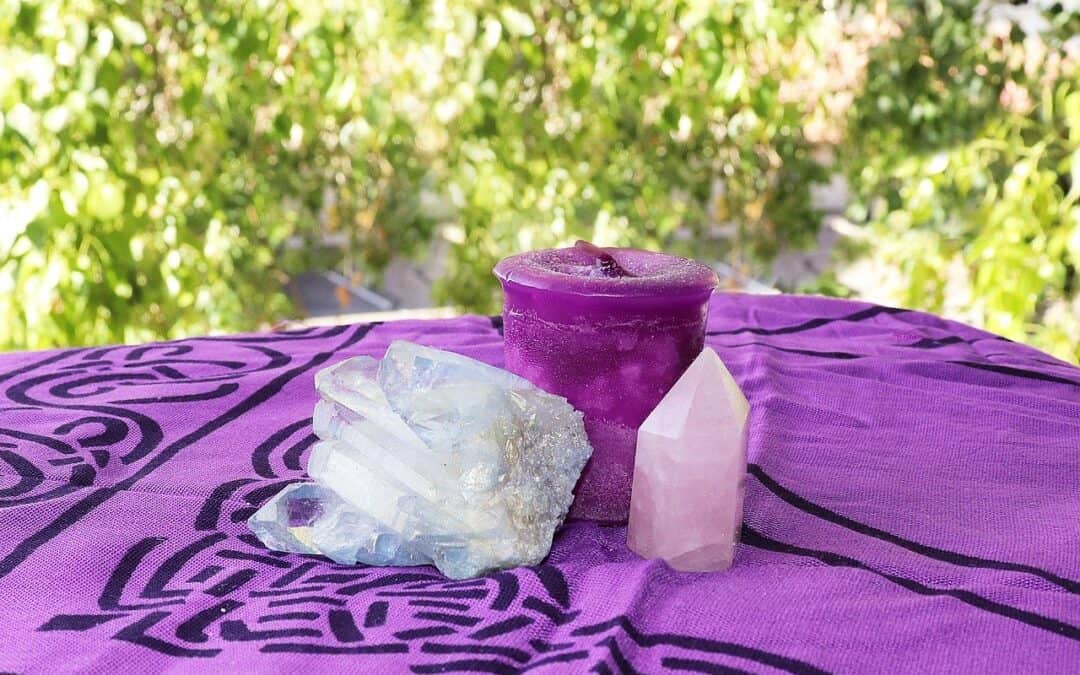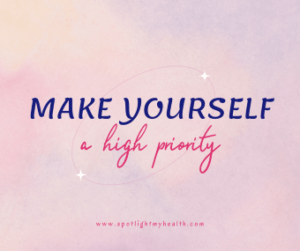Thinking about meditating and don’t know where to start. The purpose of this post is to help beginning meditators understand:
**What meditation is.
**Different types of meditation and where to start.
**How to meditate.
**The benefits of meditation and how it adds value to one’s life.
**What’s needed to meditate.
The great part about being a beginner is that you are a beginner. Your mind is wide open to the possibilities that meditation has to offer. Full of curiosity and openness, you have the opportunity to truly find out which methods of meditation feel right for you. Just remember that when you figure out what works best for you, stick with that method long enough to feel the benefits. Let’s get down to brass tacks.
WHAT IS MEDITATION
First, let’s look at what meditation is. Quite simply, it is the quieting of your mind. Yeah, right. I’m sure that’s what you’re thinking because that’s what I used to think. I have the type of brain that seems to never stop. Even when I’m watching TV, I’m usually doing something else too, like reading a book or writing a blog post.
So, back to meditation and the quieting of your mind. Needless to say, I was a skeptic. Until I met some friends that meditate on a regular basis and they showed me how. It’s not hard and it doesn’t have to be a big ritual. It’s just a time of quietness that affords many benefits. Meditation is accumulative, so should be done on a regular basis to get to the point of feeling the benefits and to keep feeling that way. Meditation will lead you on a quiet journey.
So, back to meditation and the quieting of your mind. Needless to say, I was a skeptic. Until I met some friends that meditate on a regular basis and they showed me how. It’s not hard and it doesn’t have to be a big ritual. It’s just a time of quietness that affords many benefits. Meditation is accumulative, so should be done on a regular basis to get to the point of feeling the benefits and to keep feeling that way.
TYPES OF MEDITATION
Believe it or not there are at least eight different types of meditating that you can choose to try to do. Each technique has the ability to help you overcome an obstacle, such as mindfulness, bring about deep insight or deep focus and concentration.
With all these options; just choose what type sounds interesting or fits your goals and needs better. You can find workshops or group meetings all around the world to learn any of these types of meditations. Try looking up a “Meetup” Group.
Mindfulness Meditation
This technique of meditation comes from Buddhist teachings and is a technique you can do on your own. During this type of meditation, you pay attention to your thoughts as they come and go, to hopefully notice if there are any patterns that you recognize. You learn to focus on your thoughts, feelings and sensations at that moment. This type of mediation promotes developing the skill of paying attention to your experiences with acceptance, compassion and forgiveness.
No judgment of these thoughts, just an awareness of what you are thinking, feeling and what is going on around you. Being aware of your situation at any given time, makes it easier to change the situation, if that’s a goal you have. This will help you recognize negative thinking, thereby making it easier to stop it.
Paying close attention to yourself and what is going on around you allows you to live more fully and be your true self. And that allows you to be more present in your life as you live it.
Zen or Trancendental Meditation
“Zen” means “meditation” and originates from China. It is a Buddhist technique that teaches you to sink into your spiritual state of mind. The meditation technique teaches how to prepare your mind and body to be calm so that you can open yourself up to checking out the nature of your true inner self. This is a longer type of meditation where you sit in a specific position, relax your mind and meditate until your heart rate and breathing slow down and eventually you will enter a reflective, meditative mindset.
This technique encourages a restful state of mind beyond thinking and is the most scientifically studied type of meditation. It is also the most popular around the world. You learn how to effortlessly transcend — go beyond the surface level of your awareness. You are trying to reach a state of deep inner silence by avoiding distracting thoughts and feelings.
Practicing this type of meditation involves sitting down twice a day to repeat a mantra for at least 15-20 with your eyes closed.
Transcendental meditation Is usually taught one on one since it is geared to each specific person; its not a one size fits all technique. Good for inner peace and wellness and promotes a state of relaxed awareness. You can also sit or lay comfortably while silently saying your favorite mantra.
Focused or Vipassana Meditation
If you are new to meditation, this technique may be a little too hard to do on your own until you can actually focus your attention on something specific and stop your thoughts.
You do this by concentrating on something specific with your five senses. You can focus on your breathing or something that is external like a candle or a crystal or counting mala beads.
When your mind starts to wonder, you bring it back to this object or whatever it is you are focusing on. This technique heightens your ability to focus in order to cultivate deep insight into your own true self.
Mantra Meditation
Some people find that using and repeating a mantra such as “Om” while meditating is easier than focusing on something else, like their breath. This repetition is used to focus the mind and lead into a deep concentration. Using a mantra during meditation is very popular in the Hindu and Buddha traditions.
The mantra can be spoken out loud or quietly to yourself and after awhile should be about more awareness on your part. This is a good technique to try for those that don’t really like being quiet.
Metta Meditation or Loving Kindness Meditation
This meditation focuses on expanding our capacity for love and kindness to others and ourselves. This is a prominent meditaton that teaches you to focus your energy to feel love, kindness and other positive feelings.
You learn to be open to a deeper level of pure love and kindness.
Spiritual Meditation
This type of meditation is similar to prayer in that you focus on the silence around you and connect to your God or to the Universe. It lets your inner self connect to something deeper than you. This type of meditation doesn’t involve specific beliefs, but rather evolves around the non-material such as prayer or devotionals.
Essential Oils, candles and incense are often used during this type of meditation. If you seek spiritual growth and silence, then this meditation is for you. For more on essential oils, see my post on Essential Oil Basics or Essential Oil Recipes for a safer home.
Kundalini Yoga or “Movement” Meditation
This is a type of meditation where the movement guides you. Any form of gentle movement like yoga, walking through the woods, gardening or qigong.
This meditation is meant to increase your vitality and consciousness with a mixture of physical and spiritual meditation through movement mantra chanting and breathing focus. Many who practice this form of meditation hope to reach their full potential and discover their lives’ purpose.

BENEFITS OF MEDITATION
If you don’t know the benefits of something, why would you even consider thinking about it. So, read on and think about some of these benefits. Would they add value to any parts of your life?
Benefits I feel from meditation
*less anxious, more calm
*able to dismiss and release the garbage thinking we all do, much easier
*could let go of things that would upset or frustrate me
*my mind seemed more clear throughout the day
*much less likely to become frustrated or annoyed
*I could accomplish more by not letting distractions change my focus
*thoughts are much less negative
These are just some of the things I noticed within weeks after beginning to meditate. You learn how to release the negative, frustrating thoughts much easier when they start lurking. And that’s a biggie that allows you to be more your true self.
Other Benefits
*Helps prevent overthinking *brings about a sense of calmness *less anxiety
Do you spend time analyzing what others have said to you or do you think about a future encounter and all the ways that encounter could go wrong? Do you try to figure out the worst case scenario and drive yourself crazy in the meantime?
We all overthink at times, but unfortunately doing so on a continuing basis can lead to severe anxiety.
This is why the benefit of bringing about an inner calmness comes in handy. You can teach yourself not to do the overthinking and instead feel the calmness that you gain from meditation.
The calmness helps to control your thoughts by decreasing your anxious thoughts so that you can refocus your thinking.
*Promotes better sleep
Being less anxious helps when its time to go to sleep. The calmness you can create for yourself from meditation helps with being able to go to sleep.
I usually meditate before going to bed. This allows me to get rid of anything that may have caused me to feel a bit of stress during the day. Once that calmness comes over me, I find I can fall asleep much easier.
*Increases production of melatonin
Melatonin is produced in the same area of your brain that controls your sleep/wake cycles. Since meditation helps with your sleep, it therefore also helps to increase the amount of melatonin produced.
This is another good reason to do a bit of meditation before bedtime. This boost of melatonin from meditation promotes a more restful sleep.
Better sleep gives your brain sufficient time each night to restore itself so you are better able to function the next day.
*Increases endorphins
Did you know that endorphins help relax your body and mind so that you can continue with your activities using boosts of energy from the endorphins. These endorphins are considered “feel good” hormones so they also boost your mood.
*Helps develop emotional strength
When you meditate and learn how to recognize faster when you are getting into the negative thinking, it gives you the opportunity to move past the negative thinking to refocus.
You can move away from the stressful thinking and any negative emotions that you brought up. In other words, acknowledge the negative and then refocus those thoughts.
*Cultivates and promotes a sense of your true self
Meditation helps relax your brain making it easier to get rid of stress. Your brain becomes more functional, and you have an improved sense of perception. This helps you begin to develop a sense of yourself. You become self-aware and this allows you to get in-touch with your true emotions.
You begin to be more able to pick up the subtle cues from your body and emotions are sending you, and therefore makes you more able to adjust accordingly.
For instance, you can decide much quicker not to be the grouchy grump you used to show the world to the more compassionate, calm you that you always wanted to be.
*Promotes better focus and concentration
When you have mastered control of letting stress take over your life, your brain finds it much easier to function. This lets you concentrate and focus more quickly and easier due to the ability to process information faster.
I know I feel much less brain fog which helps me feel more able to “get her done.” I feel more able to focus and this brings me to the next benefit.
*Mental clarity and alertness
Looking back, I’m surprised at how much brain fog I felt, probably due to bad sleep habits. Luckily, there is lots of research out there that meditation promotes mindfulness. Simply put, your mind becomes clear and fully aware of what is happening around you.
This helps enhance your overall cognitive performance. You develop the ability to direct your brain to turn off distractions and unnecessary thoughts.
HOW TO MEDITATE WHEN BEGINNING
Meditating is not hard, and you don’t have to do it for hours on end to reap the benefits. Basically, you just need a quiet, comfortable area that you can relax in.
1. Decide what type of meditation you want to try
As I’ve shared with you, there are many types of meditation and you may have to try several types before you find the one that works best for you. My guess is that you will actually end up liking several, but at the beginning you may want to try either mindfullness or spiritual meditation. Both of these types can be done on your own.
2. Do your meditation at the same time each day
I suggest doing this so that your meditation has a chance to become a habit. A good habit. We all are pretty busy people, so putting meditation in your schedule will help you remember to do it until it becomes something you enjoy and therefore won’t forgt to do. This is a practice you should make time for so that you can reap all the good benefits that meditation provides.
I tend to meditate at night because it calms me and helps me get ready to fall asleep. You can meditate at anytime that benefits you.
3. Find a spot that you can make yourself comfortable
Find or create a space that is calm and quiet. Some place that you won’t be interrupted. Keep this space uncluttered so that it gives off a feeling of calmness. Keep your candles, crystals and anything else you may use during meditation here.
4. Use a prompt to get you ready
By prompt, I mean something that gets you ready mentally for your meditating. I have a specific song that I put on to get myself ready. It’s Kelley Mooney’s version of “Hallelujah.” No matter how many times I hear it, I get goose pimples and feel closer to the Divine, so I know I’m ready to sit quietly and meditate.
The prompt is to send a signal to your brain that its time for meditation. Find something the promotes quietness and calmness for you. Not something that will trigger or stimulate your brain. Think soothing instead.
5. Be comfortable.
You don’t have to sit with legs crossed and back straight, just comfortable. I’ve seen people sit on the floor, leaning against the wall, laying on the floor and sitting in a chair. I sit up in my bed against the headboard with my hands resting on my legs.
Wear loose clothing, lean your back against something if need be, are your legs comfortable, etc. You don’t want to be meditating and start thinking about your aching back or your stiff knees, etc. You don’t want any physical or outside distractions.
I’ll also put on background music, something calming; I like listening to waves. This is your choice. You also don’t have to meditate for great lengths of time.
6. Sit straight, but relaxed
Try to keep your spine aligned straight, but relaxed while you sit quietly and pay attention to your breathing. Slowly in, then slowly out. Repeat several times until you’ve zeroed in on making your breathing slow and steady and you feel totally relaxed.
7. Become aware of yourself and your body.
You want to scan yourself from the top of your head to your feet. Rest your palms on top of your legs or knees, whichever is more comfortable for you. Concentrate on different parts of your body, one at a time, until you feel totally relaxed.
For instance, while breathing in, raise your shoulders, then relax them when you breath out. Do this to different sections of your body until you’re totally relaxed and ready to just concentrate on your breathing. Try and relax any tense body part that you become aware of. Then come back to your breathing and relax even more.
8. Try and let your thoughts fall away.
Your only intention at this point is relaxation and concentrate on your breathing. Breath naturally while doing this. Don’t worry if your thoughts start wondering, accept it and calmly bring your thoughts back to your breathing. Slow and steady.
If you don’t want to use your breathing as your “mantra”, then choose a mantra to recite or keep your eyes open and choose a focal point to bring your thoughts back to when you begin to think of other things. If you choose to use a focal point, keep your gaze soft on the object. A steady stare will cause you to tense up, so soften your gaze by looking slightly downward.
I use breathing because its always here with me and its easy to focus on the easy flow of the in and out of breathing. The extra oxygen does me good and the smooth and steady pace keeps me calm. When my mind starts to wonder, its very easy for me to bring myself back to my breathing.
9. When your mind begins to wonder, don’t fight it or get upset.
As a beginner, your mind will wander, so accept it and work on it. Don’t force anything during this process; just gently return to the present by concentrating on your breathing again. Focus on your breathing or focal point that you chose. No recriminations here, just gentle reminding and turning back to and being mindful of what you are doing.
Its normal and this take practice, so the more you meditate, the better you will become at focusing your attention only on what you are doing.
10. Once relaxed, become aware of any sounds around you.
Listen to those sounds. Determine where they are coming from. Inside, outside, near or far. Become more aware of yourself and your surroundings; putting your focus there is becoming “mindful”.
11. Come out of your meditation slowly
As you come out of your meditation, do it slowly so that you can remember where your thoughts went while meditating or feelings that may have come up.
Begin to notice the sounds, smells and the atmosphere around you. What are you feeling mentally, emotionally and physically? Remember this so that you can think about it at a later time, if you want. If nothing comes to mind, that’s OK too.
12. Bring your attention fully back to the present.
Take your time; don’t just jump up and go to the next task on your list of things to do. Savor the moment by feeling your hands, feet, arms, legs and the rest of your body. Slowly wiggle and move these parts to let them know that its time to “wake up.” Make this a good time to practice your gratitude for what goodness is around you.
HOW LONG DO I NEED TO MEDITATE?
I suggest starting out for just five minutes and moving up to ten minutes. If you can eventually do longer, good for you. My go to time is usually between 10-20 minutes. Eventually you will wonder that the time went by so quickly.
There is no right or wrong way to meditate and no specific amount of time to spend meditating. You have to do what is comfortable for you, for whatever amount of time, to feel the benefits. Just make sure to add it to you daily routine.
You also don’t have to meditate alone. There are plenty of instructional meditation videos on YouTube.
WHAT IS NEEDED TO MEDITATE?
Other than a quiet place to meditate not much else is needed, but there are things that others feel enhance the experience. For instance, I cleanse myself with sage before I meditate. I also like to use different crystals while meditating and I light a candle. I don’t really need these items, but to me they add to my meditation.

FINAL THOUGHTS
As a beginner at meditation, the sky is the limit and you are the only one who can decide which meditation technique you prefer. If you want to develop forgiveness and compassion, metta meditation would be the place to start, for inner peace you have mindfulness or movement meditations. Both help with the agitation we have in our minds and body.
Meditation is a solo journey of mental clarity, emotional calmness and “being” in the moment. Give it a try—you won’t regret it.
Cher
Relevant Reads:
Law of Attraction and How it Works
If you enjoyed my post, pin it and share it—it would be a wonderful compliment!!










